Contents
Introduction
The Syrian Civil War
Who Is Involved, And Why?
Concluding Remarks
Bitesize Edition
With most large geopolitical stories that emerge unexpectedly, I find it useful to explore the past that led us down the road to the present day. From the present day, we can then begin to piece together and formulate what the future could look like.
In 2011, as a consequence of the Arab Spring, the Syrian Civil War erupted. In the chaos, many groups were vying for power and influence, including the Syrian government, Syrian rebels, the Kurds, and ISIS. The field of play in Syria has undergone vast changes since 2011.
There are also smaller non-state actors fighting in Syria and many countries that had an active role in the country, including the United States, Russia, Iran, and Turkey. Before exploring what Syria could look like as we move into 2025, let’s break down the story of the last 14 years in war-torn Syria.
Introduction
After a short break to cover my 2024 reflections and 2025 scenario analysis pieces, I return to my analysis of Syria today. My previous piece explored the history, and so today I’ll dive into the Syrian Civil War, and how we found ourselves on the doorstep of the collapse of the Assad Regime. I’ll also explore the sheer number of groups involved here, whether states or non-state actors. Let’s dive in.
The Syrian Civil War
Throughout 2011, we saw protests and civil uprisings. This arrived in Syria in Damascus and Aleppo in March 2011. The same month saw four protestors shot and killed by the Syrian Army, and the burning down of a Ba’ath Party headquarters. What started as a protest demanding democratic reforms was suddenly targeting an overthrow of the Assad government. The biggest protest occurred on the 1st of July 2011, when 100,000 people gathered to protest against the government.
From July 2011 until April 2012, we saw militias rise within Syria. Kurdish forces emerged in the North East and opposition groups emerged in batches, especially in the northwest. After a previous ceasefire attempt failed, the UN first announced that Syria had entered a civil war in June 2012.
Over the next year, Kurdish and opposition forces expanded massively to the detriment of Assad and government forces.
This was short-lived, however, as 2013 and 2014 marked the Assad government forces regrouping and regaining some territory. The opposition rebels especially suffered as a new group entered the fray: ISIL.
Starting in June 2014, ISIL seized territory in Iraq and heavy weapons and equipment from the Iraqi army. They brought some of this equipment and weaponry into their assault on Syria since the border between Iraq and Syria was a weak one. ISIL split off from Al Qaeda in 2014 and aimed to establish a caliphate, and Syria was in flux with many different groups pursuing different goals. ISIL could hence easily take advantage of this chaos to sow further chaos, which is one of their ultimate goals. One thing is clear, ISIL had no allies in Syria.
The United States joined the conflict in September 2014 by bombing ISIL in Syria. Bahrain, Saudi Arabia, the UAE, Qatar, and Jordan also were involved as foreign partners of the United States.
But even with the United States’ involvement, ISIL reached their maximum territorial control in the Summer of 2015 after another offensive against multiple parties involved. Assad’s government appeared on the ropes.
In September 2015, Assad asked the Russians to get involved. The Russian Air Forces began air strikes against ISIL and the anti-Assad Free Syrian Army (FSA). The United States moved to supply the Kurds and many opposition groups in response to Russia’s arrival. This civil war had developed into a proxy war. October saw a failed peace attempt in Vienna after the future of Bashar al-Assad was disagreed upon. Iran was also involved in these peace talks, with them and the Russians supporting the Assad regime. Barack Obama stated he couldn’t see a situation where peace could be found if Assad remained in power. Little did he know at the time that this conflict would rage for close to a decade before Assad fell.
The next two years saw Turkey shoot down a Russian plane, and the Kurds expanded in the North, as well as the rebels in the South. Turkey started military intervention in the North in 2016 in what the Turks named Operation Euphrates Shield.
The fighting continued, with Russia stating in October 2017 that ISIL had been removed completely from Syria. In reality, they remained in small pockets, but since this rapid downfall in power occurred, they haven’t re-emerged. The Turks also launched a second cross-border operation with Operation Olive Branch targeting the Kurds in Syria.
Aside from further Turkish operations against the Kurds on the border, the world started to receive less news about the civil war in Syria over the following years. The conflict had reached a stalemate, with many geopolitical actors still vying for greater power and control in Syria but making little progress.
I’m aware that this isn’t an in-depth analysis of the Syrian Civil War, but books could be written on this conflict. I hope this provides a surface-level analysis of the groups involved here, and the changes in territorial control that occurred during this period.
In 2023, the conflict was officially described as “frozen.” Very little territorial ground was made by any group. Syria had been reinvited into the Arab League, and relations with Syria were restarted with many countries. Things seemed to be trending in a more positive direction than the previous twelve years of civil war. Next week, I’ll explore how we managed to move from this point to the rapid collapse of the Assad regime. But for now, let’s explore the key players involved here and why they have interests in the future of Syria, even after the Assad collapse.
Who Is Involved, and Why?
With the sheer number of geopolitical actors involved here, whether other countries or non-state actors, the conflict in Syria is a prime example of a proxy war. Each geopolitical actor here is attempting to improve their individual geopolitical standing through various means, be it military bases, or support of domestic groups, among other strategies. Unfortunately, as proxy wars unfold, the biggest loser is often the country hosting the war. In this case, the biggest loser has been Syria since 2011. Hence, let’s dive into the nations and groups in play here to understand the playing field better.
Countries in Syria:
Turkey - Syria’s northern neighbour had concerns about security, and so established their buffer zone of around 20km, as agreed with the United States and Russia. The Turks also hope to counter Kurdish influence from groups such as the YPG and PKK. The Syrian Democratic Forces also fall into this category, since the YPG is a force within the SDF. The Turks also want to counter ISIS and the Assad regime. They did this by supporting the FSA, and its successor the Syrian National Army (SNA). As with all proxy wars, the Turks also work to ensure Russia and Iran don’t gain too much influence in Syria.
Iran - The Iranians were active in Syria to uphold their land bridge to the Mediterranean and Hezbollah in Lebanon. This came through the support of the Assad regime. It was also so Iran could counter Sunni Muslim nations, the United States, and Israel.

Russia - Syria under both Hafez and Bashar has maintained relations with Russia, signing a cooperation agreement back during the Cold War. Russia views Syria as a foothold in the Middle East from which it can prevent Western-led regime change. The Russians exacted this influence through the Naval Base at Tartus and the Air Base at Khmeimim. There is also a Chechen presence in Syria that Russia hopes to suppress so instability doesn’t arise closer to home. Most importantly, Russian military assets and influence far from home paints Russia as exactly what it wants to be: A global power.
Israel - With Israel occupying the Golan Heights, and Russia and Iranian assets sitting at the other side of this border, the Israelis have an interest in ensuring their own security. Iran could create another front of this conflict, and have Israel fighting on multiple fronts at the same time. It’s in Israel’s interest to limit any Iranian moves made in Syria to avoid this, while also limiting the Iranian connection with Hezbollah. Some in the Israeli government also have wider geopolitical ambitions, with the finance minister stating a few months ago that he wants to expand Israel as far as Damascus. Of course, the collapse of Assad and the ceasefire with Hezbollah have dramatically changed this situation for the Israelis in the last few weeks, which I’ll discuss next week.
The United States - Initially, the United States sought to counter and limit ISIL in Syria. Today, their positions in Syria support the Kurds, which puts them in a difficult position with the Turkish. They can also view Russian and Iranian actions from close by, acting to limit the influence of both when the U.S. deems it necessary. The U.S. has nodes of power around the world through its military bases. Whether other countries agree or disagree with this strategy, or whether the U.S. is increasing or decreasing these military nodes, there’s no denying it allows them to uphold the current world order and influence the direction it heads in.
Groups in Syria:
Syrian Democratic Forces (SDF) - Controls Northern Syria. This Kurdish-led alliance is supported by the United States and is rivalled by the Turkish.
People’s Liberation Party-Front (HKP) - The group has limited influence in Syria but supports Kurdish and leftist movements.
Patriotic Kurdish Team (PKT) - A Kurdish nationalist faction in Syria, advocating for Kurdish autonomy in Northern Syria.
Tahrir al-Sham (TTS) - TTS was a spin-off from Al Qaeda which distanced itself intending to gain political legitimacy. The group started in the Idlib province and eventually became HTS.
Hayat Tahrir al-Sham (HTS) - Developed into HTS from TTS. The group of rebels were active in the Idlib province before launching their takeover of Syria. They were heavily backed by Turkey, but are now strong enough to make their own decisions, leading to some questions as to the connection between HTS and the Turks. More hardline groups such as Ansar al-Tawhid and Hurras al-Din are splinter groups of HTS.
Syrian National Army (SNA) - Turkey’s equivalent of Russia’s Wagner Group. They opposed the Assad regime and Kurdish forces. They enforce the buffer zones Turkey possesses. Previously known as the Free Syrian Army.

People’s Protection Units (YPG) - A Kurdish militia that serves as the main fighting force of the SDF. The YPG’s ties to the PKK have damaged relations with Turkey.
Syrian Opposition Coalition (SOC) - Representing the Syrian opposition in exile. The coalition had support from the West and Gulf States but had limited influence on the ground.
Kurdistan Workers Party (PKK) - The PKK is a Kurdish militant group operating in Turkey, Syria, and Iraq. It seeks Kurdish autonomy, both politically and militarily. Turkey views the group as a terrorist organisation.
Kurdish National Council (KNC) - A Kurdish group that opposes Kurdish autonomy through violent means, hoping to establish autonomy via political means only.
Islamic State (ISIS) - Although weakened, the group continues to act in small cells.
With the field of play laid out in Syria, we are now positioned to dive into recent events. What led to the fall of the Assad regime, and where does Syria go now? I’ll discuss this in detail next week.
Concluding Remarks
Next week, I’ll conclude my series on Syria, looking into the potential future directions that Syria could take. We’ve had Al Jolani of HTS threatening the Kurds, the Turks amassing troops on the Syrian border, and the Russians relocating their air defences from their bases in Syria to Libya. There’s still a lot to cover here, so come back next week for more.
Other News In Geopolitics This Week
Alaska Sues Federal Government Over Curbs To Oil and Gas Leases
IDF Soldier On Vacation Flees Brazil As He Is Pursued For War Crimes
Italy In Talks With Starlink For $1.6B Telecom Security Deal
Maduro: Americans and Ukrainians Among Group of Mercenaries Detained
Palestinian Authority Requests $680M In Aid From United States
Preemptive Strikes On Iran Will Be Real Possibility Under Trump
Senators Introduce “Lock The Clock” Bill To Make Daylight Savings Permanent
Three Chinese Nationals Arrested In DR Congo With 12 Gold Bars and $800,000
Trump and Obama Share Conversation at The Funeral of Jimmy Carter
Trump Announces $20B Of Foreign Investment in US Data Centres
Trump Expected To Sign 100 Executive Orders Upon Taking Office
Trump's Move To Unban Biden’s Offshore Drilling Ban Could Prove Difficult
Trump Not Ruling Out Military Force To Claim Greenland and Panama Canal
U.S. House Passes Bill To Protect Netanyahu From ICC Warrant
Thanks for reading! I’d greatly appreciate it if you were to like or share this post with others! If you want more then subscribe on Substack for these posts directly to your email inbox. I research history, geopolitics, and financial markets to understand the world and the people around us. If any of my work helps you be more prepared and ease your mind, that’s great. If you like what you read please share with others.
Key Links
The Geopolitics Explained Podcast
If you want to see daily updates and discover other newsletters that suit you, download the Substack App.
You can become a paid subscriber to support my work. There are paid posts every Thursday and long-form monthly articles in my global questions series exclusively for paid subscribers. The Geopolitics Database is also accessible. Read Geopolitics Explained for 20p per day or start a free trial below to find out if my work is for you! I appreciate your support!
Sources:
https://www.nytimes.com/article/syria-civil-war-rebels.html
https://en.wikipedia.org/wiki/Idlib
https://en.m.wikipedia.org/wiki/History_of_Syria
https://en.wikipedia.org/wiki/Syrian_civil_war
https://en.wikipedia.org/wiki/Timeline_of_the_Syrian_civil_war
https://en.m.wikipedia.org/wiki/Arab_Spring
https://en.m.wikipedia.org/wiki/2024_Israeli_invasion_of_Syria



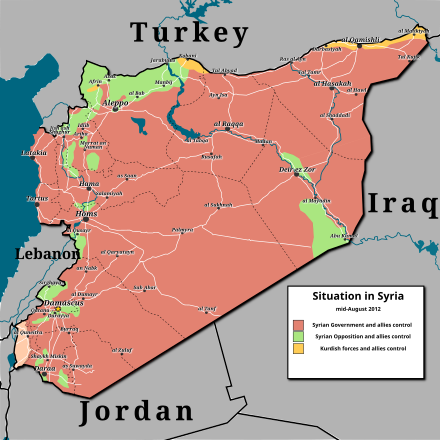
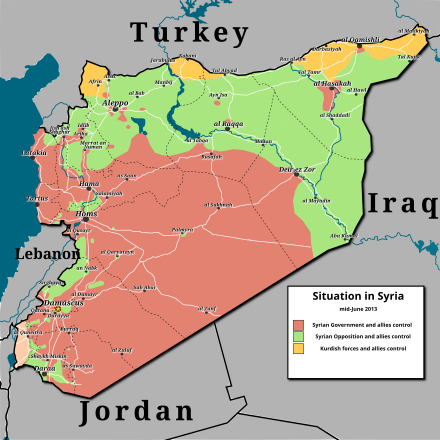
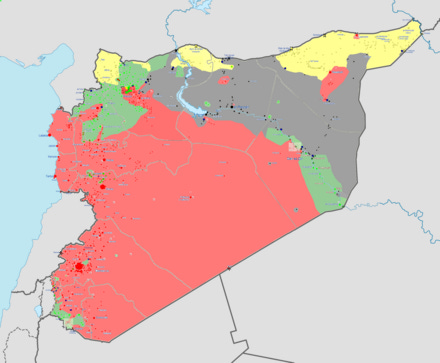
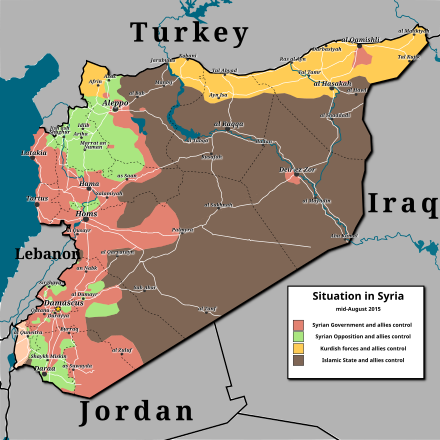
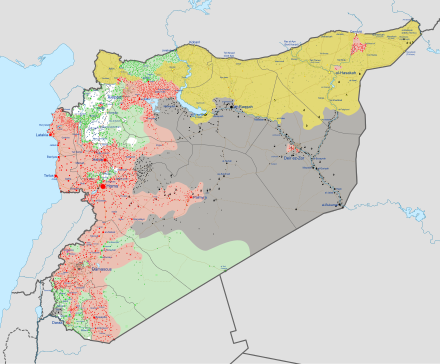
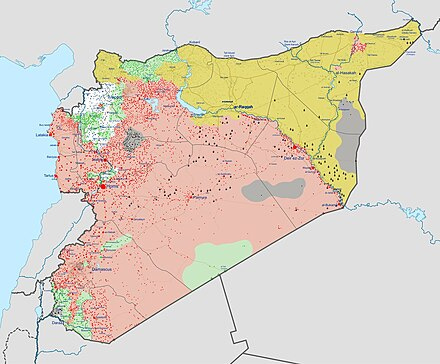
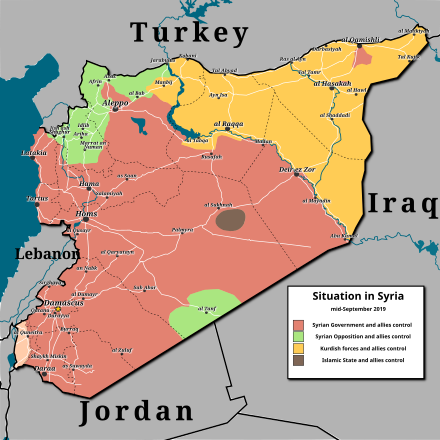

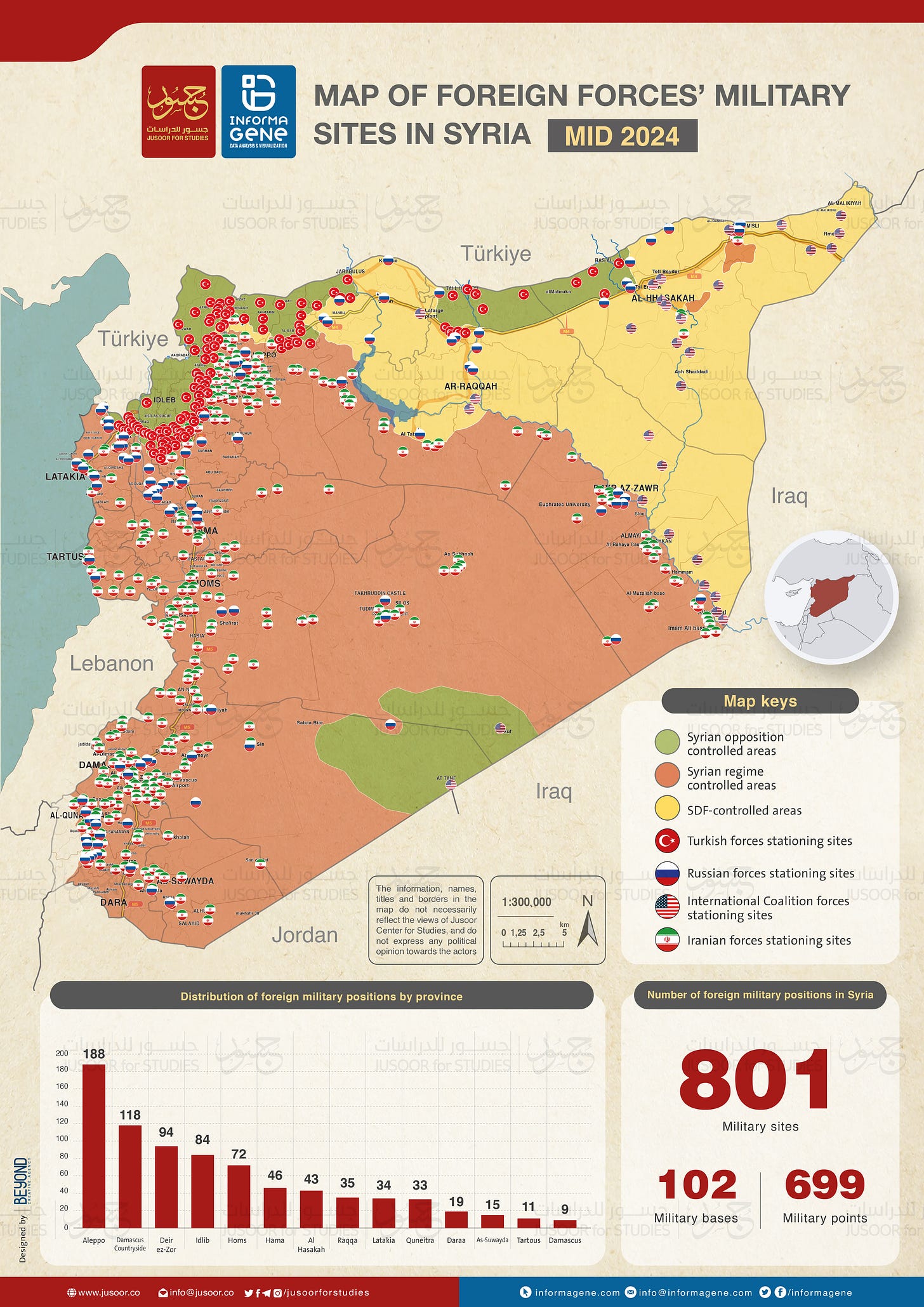
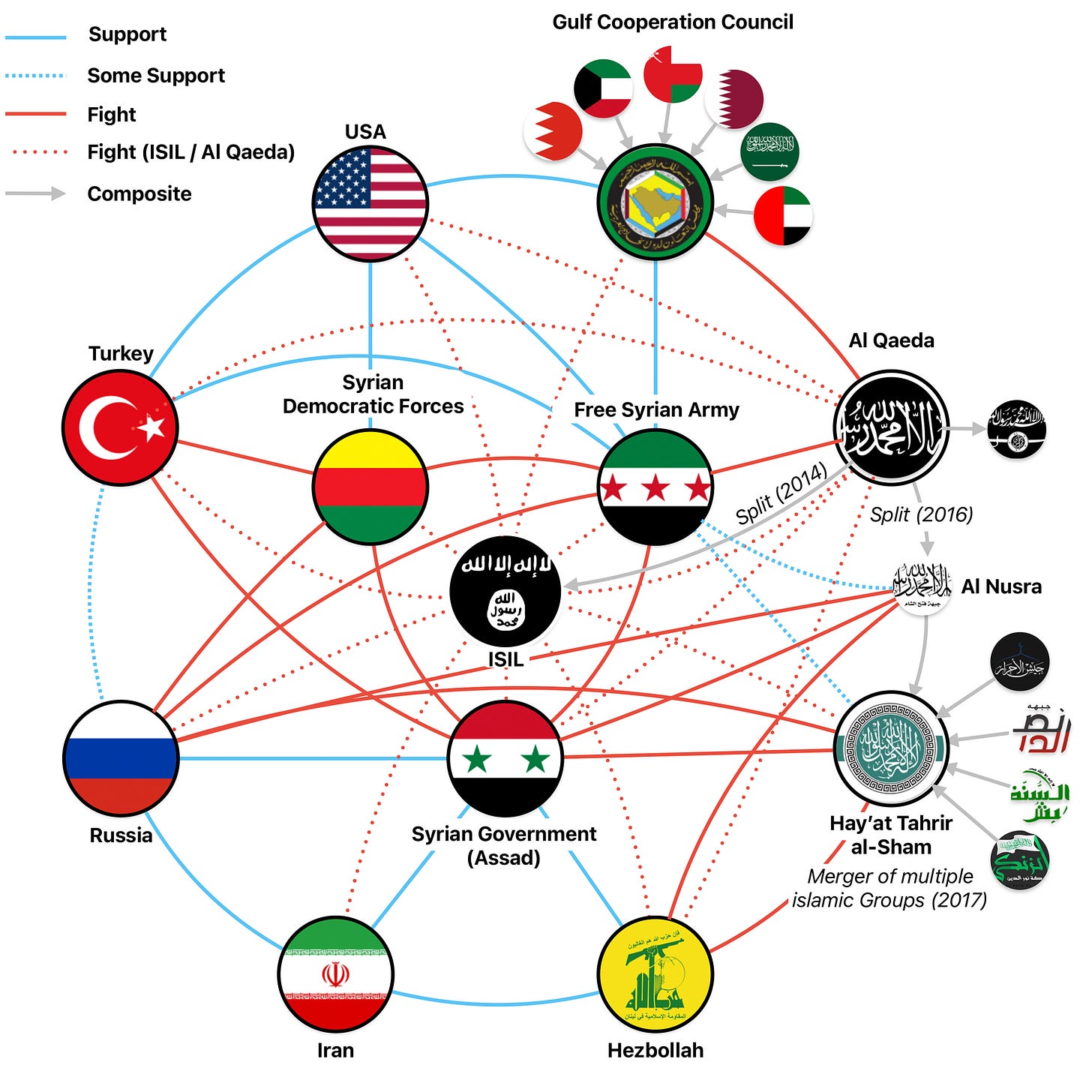
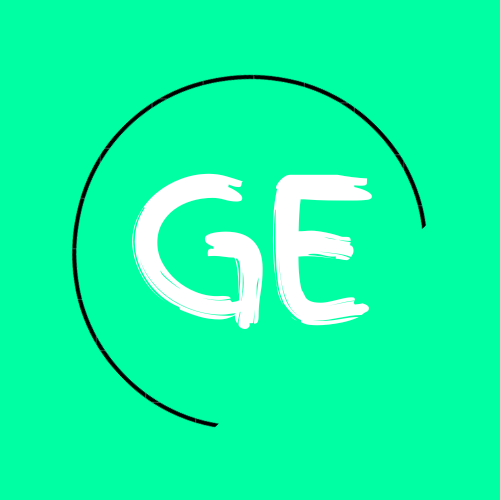




An excellent summary, as always—brilliantly done!
Your article evoked memories of a hauntingly similar chapter from around 40 years ago: the Lebanese Civil War (1975-1990). What began as internal protests and ethnoreligious strife quickly spiralled into a proxy battleground for regional and global powers. Regional actors intervened for their interests, and then the superpowers sought their share of influence. What followed was a brutal quagmire of militia-on-militia and militia-on-military violence, with certain moments, like Sabra and Shatila, seared vividly and permanently into our collective memory.
The Syrians entered Lebanon under the pretence of stabilisation but stayed long after Israel’s withdrawal, cementing their presence until they were eventually forced out (2005). Decades later, the scars of that conflict remain deeply etched into Lebanon's fabric, visible even today.
It seems almost poetic, if not ironic, that history appears to be replaying itself—this time targeting one of the key players of that dark period. The forces orchestrating so much strife in Lebanon are now engulfed by similar chaos. Perhaps it is history’s irony or karma’s retribution that the architects of those skirmishes and the instigators of violence have tasted the turmoil they once imposed on others, leading to the ultimate downfall of the (former) regime.